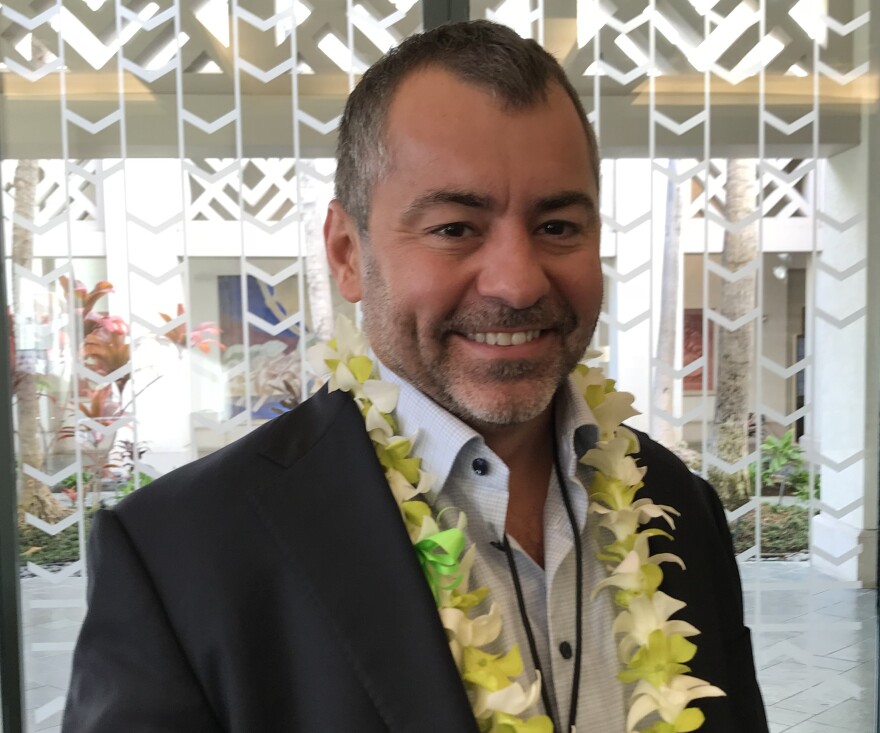A first-ever Medical Conference at the Hawai’i Convention Center this week is focusing on the natural healing properties of the human body. HPR’s Wayne Yoshioka reports.
Stem Cell Therapy to repair dysfunctional cells and tissue to treat chronic illnesses is the future of medicine. That, according to Nathan Bryan, a professor and researcher at Baylor College of Medicine in Texas.

“If you give the body what it needs, it heals itself. Drug therapy hasn’t been the answer for a number of years. So my focus in research has always been on, how do we make individual cells more functional. And, through the discovery of this molecule called Nitric Oxide, we can actually open up blood vessels, start profusing dysfunctional tissue and actually mobilize their own resident stem cells to go to those sites of dysfunctional tissue or injury and let the body heal itself and repair.”
The Federal Food and Drug Administration is the regulatory and enforcement authority for stem cell production. Physicians with the appropriate specialty can draw stem cells and, without manipulating them in any way, can re-inject them into the same patient without FDA approval. This is called a tissue transfer. Further manipulation of stem cells classify them as a drug and will require clinical trials of 2-3 thousand subjects and FDA approval.

That cost is about 500 million dollars. Dr. Himanshu Bansal, has medical practices in New York and India and supports FDA oversight.
“For the public, the best way is, if they go to a physician, they should ask what stem cell they going to use. Is there any published work on it? And, before getting an injection, they should have a report from third party whether the stem cells that are being injected is a stem cell and what quantity. We call it validation before injection.”

The Federal Trade Commission governs stem cell advertising and marketing to protect against fraudulent claims, false advertising or misbranding a product. Dr. Kelly Withy, from the John A. Burns School of Medicine, supports stem cell research and treatment. She was injured in a car accident in her teens and has had her left knee, right hip, right shoulder successfully treated by Blue Tail Medical Group in Columbia, Missouri.
“So, they take your platelets and they take your fat and they spin it down and they put it back in and they put the platelets in first as a matrix for the fat to then attach to and grow new cells like your body already had. So, in the joints, it took away the pain pretty much completely.”
The centrifuge process to concentrate the stem cells to a therapeutic level is regulated and approved by the FDA. Blue Tail Medical Group consulting CEO, Frank Stevenson, says in most cases involving the knee, where there is enough cartilage left, stem cell injection therapy can regenerate some of that cartilage and prevent or postpone knee replacement surgery.

“Knee replacement surgery, you know, the price varies nationally, but it can cost $50-thousand for a knee replacement. Whereas, you could do a stem cell injection with some add a post tissue matrix for significantly less than that. Under $5-thousand. So, a big difference.”
The inaugural Pacific Regenerative Medicine Conference attracted nearly 250 attendees from the U-S, Spain, India, Nicaragua and Canada. Wayne Yoshioka, HPR News.




